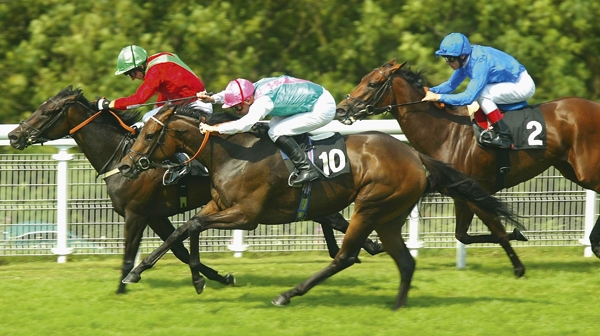His Grace the tenth Duke of Richmond gave my father the job of running his beloved racecourse, Goodwood, when I was four. Memories of my childhood are framed by the sweep of Goodwood estate. I may have learned to walk on Trundle Hill. I certainly learned to drive on the legendary motor-racing circuit — which may explain the points on my licence.
Goodwood Racecourse dates from 1802 when the third Duke — grandson of Charles II — crafted a track in the unorthodox setting of the South Downs. Its location gives us one of the world’s most stunning sporting spectacles: Glorious Goodwood, the meeting run at the West Sussex course over five days at the end of July.
Guests of the Richmond family historically came to Goodwood for their summer holidays, a tradition that continues today. Racegoers stay locally with friends and family — racing one day, going to the seaside the next, and dining in the excellent local pubs (the Richmond Arms is a must). A sartorial emphasis on panamas — rather than morning dress — adds to the relaxed elegance. Cool is as cool does, and cool has always done Goodwood.
Indeed, it is a great achievement to have stayed cool without the torturous changes endured by Ascot and Epsom. There are still the same grand house parties at Goodwood House as in Edwardian times; the same slightly tipsy descent down the hill after racing to the Fox Goes Free pub; the same evening cricket matches after the last race. The globally significant racing that annually attracts top equine and human participants is almost incongruous to the holiday atmosphere.
It was at Goodwood that the DNA of racing was changed forever. Following the 1974 Sussex Stakes — in which the American-bred Ace of Aces destroyed the best milers in Europe — the great Irish breeder John Magnier, over a drink with the late Robert Sangster, solved the challenge of getting his hands on the best stallions. The key, Magnier told Sangster, was to raid the American sales for yearlings. In his own words, the latter promptly inhaled a glass of Roederer Cristal ‘like it was draft lager’. With Magnier gutting the catalogues and Sangster’s financial firepower in the sales rings, the pair went on to own most of the best horseflesh seen since.
The Sussex Stakes has been a true theatre of greatness in recent years. In 2011, Frankel took on the previous winner Canford Cliffs in a hotly-anticipated ‘Duel of the Downs’. He won by five lengths, and again by six lengths the following year. The odds of 1/20 tell you everything about this historic horse. But trainer Henry Cecil’s eagerness to incorporate the Sussex Stakes into Frankel’s career twice — the only such race — speaks of Goodwood’s special place in racing.
What is my favourite win at Goodwood? I have misty-eyed memories of Ouija Board, Double Trigger and Illustrious Blue, but the winner is a lesser-known animal called Phantom Wind. Prince Khalid Abdullah’s filly won the 2004 Oak Tree Stakes at 16/1, with the Fabricius shirt firmly on the line. The following year, I founded my bookmaking firm, Fitzdares; so this was probably the last successful bet on a long-priced winner that I’ll ever remember with affection!






Comments